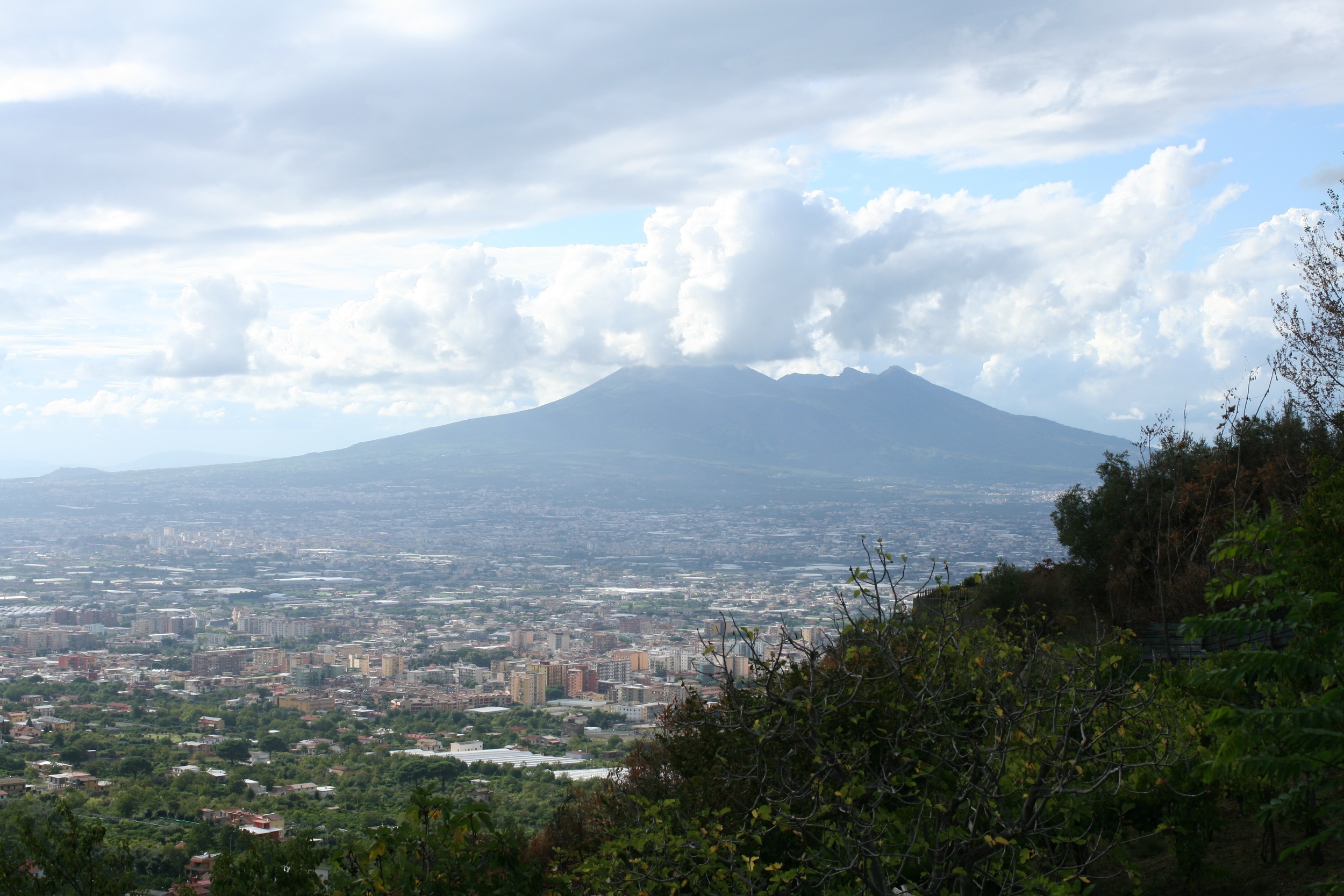Villa Dora
About Villa Dora:
Volcanic soils make interesting wines, and many of Campania's famous terroirs are of volcanic origin. Mount Vesuvius is an active volcano just east of Naples, and the organically farmed vineyards of Villa Dora are on the lower southern slopes of the volcano, inside the national park that surrounds it. The soil, ground-up pumice really, looks like dark grey Grape-Nuts, and the wines are strikingly flavorful and distinctive. There is no known scientific reason why certain minerals in the soil would affect the flavors of the wines grown in that soil, but I have to think there's a connection.
Another benefit of this striking soil is that it is inhospitable to Phylloxera Vastatrix, the ominously named root-louse that wiped out viticulture in much of Europe in the decades on either side of 1900. The insect can’t infect the vines, which means the plants don’t have to be grafted to an American root-stock when they are planted (the great majority of the world’s vineyards have to be grafted over.) Many tasters feel that ungrafted vines make better wine. Try these and see for yourself.
Villa Dora is the passion of Vincenzo Ambrosio, and it is his enthusiasm for this estate and the striking wines grown here that has made the project possible. Now his equally enthusiastic nephew Vincenzo Orabona is our contact with the estate; bottling the component varieties of Vesuvio like Piedirosso and Caprettone separately was his idea, and a good one.
The Wines:
Caprettone
Caprettone is a Campanian variety that is usually grown around Mount Vesuvius. It used to be thought of as a type of Coda di Volpe, but Ian d’Agata tells us that the two grapes are now known to be genetically different. At the time of writing, this historic confusion is still written into the official document that defines the Lacryma Christi denomination: ‘Coda di Volpe, locally referred to as Caprettone…’ D’Agata also tells us that the classic area of production of the variety is on the south side of Mount Vesuvius, where Villa Dora’s vineyards and winery are located. The variety makes up about 4/5 of their Lacryma Christi, but is here bottled unblended. All of the vines at Villa Dora are ungrafted, due to the volcanic soil that comes from eruptions of Vesuvius; this is extremely rare in the world of wine generally. (The few vineyards in France that remain ungrafted are seen as national treasures, as is Quinto do Noval’s ‘Nacional’ vineyard in Portugal.)
Winemaking here is very straightforward, the fruit is pressed after about an hour of maceration, then fermented in stainless steel tanks at reduced temperature until dry. The wine is aged on the fine lees for at least 5 or 6 months and normally stays in the tank for about a year before bottling.
Villa Dora’s whites are the purest expression of volcanic tang that I’ve tasted, and this is a vivid, distinctive, flinty example of their style. Most of the time when someone says they are smelling or tasting some kind of rock or soil in a wine there is some creative license involved, but in this case I swear it’s just there. Fruit is on the green side, apple perhaps; struck flint, a hint of flowers; great balance of acidity and fruit on the palate; long and crisp but not severe. If you like dry Riesling you should try it, maybe with seafood (Vincenzo says octopus salad, which sounds delicious.)
Lacryma Christi del Vesuvio DOC Bianco 'Vigna del Vulcano'
Campania produces some of Italy's best and most distinctive white wines, and this is a fine example: clear struck flint aroma, with hints of white peach, preserved lemon, flowers, and herbs; medium-plus weight, excellent fresh acidity, very long finish. The wine is made of organically grown Caprettone (80%) and Falanghina (20%) grapes, fermented and aged in stainless steel with no oak or malo-lactic fermentation.
Piedirosso
This Campanian variety is found all around the Bay of Naples, sometimes blended with Aglianico, sometimes unblended, as here. (It makes up about 80% of Villa Dora’s Lacryma Christi.) It is named after the red stalks of the ripe bunches, which are said to resemble the red feet of pigeons. All of the vines at Villa Dora are ungrafted, due to the volcanic soil that comes from eruptions of Vesuvius; this is extremely rare in the world of a wine generally. (The few vineyards in France that remain ungrafted are seen as national treasures, as is Quinto do Noval’s ‘Nacional’ vineyard in Portugal.) The wine is made with a very short maceration, just a few days, followed by aging for about a year and a half in stainless steel. Fermentation is carried out using selected yeasts.
Lacryma Christi del Vesuvio DOC Rosso 'Gelsonero'
80% Piedirosso and 20% Aglianico, organically grown: broad reddish-black color; smoky aroma with a hint of tar (notes I often find in red wines grown in volcanic soils); aroma and flavor of black fruit (blackberry, black cherry) and woody herbs (thyme, bay, rosemary); medium-weight but light on its feet. It is aged in puncheons for about a year. Drink now with red meats or cellar.
This bottling is classic for the variety, with the aroma and flavor both showing effusive red fruit, wild herb, and tar notes, with some fine tannins evident on the finish. This could be my choice for Best Red Wine Ever with Pizza, no surprise since both come from Naples, but it will make many other dishes taste good too - pasta with ragù, for example, or roast pork.
more information:
Visit the Villa Dora Website








